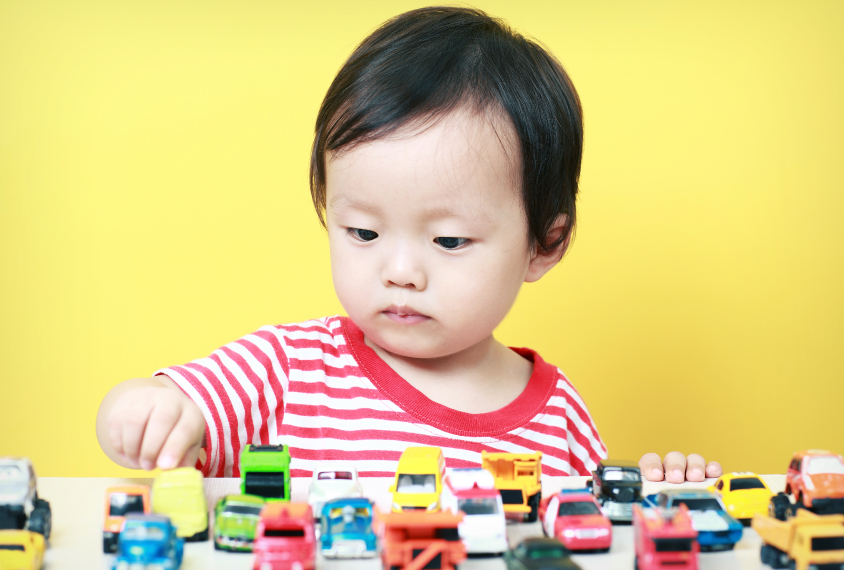Obsessive-compulsive disorder in children and teens has become more common in recent years. About one in every 200 American children suffers from OCD (What is OCD?). All children have worries and negative thoughts at times. But children with OCD can't stop their disturbing thoughts, images, and urges, no matter what they try. These obsessive thoughts tend to drive them to behave in a particular way, repetitively.
Parents and caregivers must understand the unique impact OCD has on children, so that they can help them get effective treatment. Although signs and symptoms of OCD in children and adults share many similarities, important differences do exist. Also, the signs of OCD in children can look similar to those of ADHD, autism, and Tourette's syndrome. A complete medical and psychological evaluation can help the physician make an accurate diagnosis.
Symptoms of OCD in Children
The symptoms of OCD in children involve repetitive thoughts or images called obsessions. Compulsions represent the ritual behaviors that they repeat again and again to banish the thoughts. (Read about obsessions and compulsions)
- Examples of obsessive thoughts in OCD kids may include:
- Excessive preoccupation with germs, dirt, illness
- Expresses repeated doubts, such as whether the stove is turned off
- Intrusive thoughts about a parent getting hurt
- Excessive preoccupation with symmetry, order, and exactness
- Disturbing thoughts that do not align with personal religious training
- Excessive drive to know or remember facts that seem very trivial
- Unreasonable attention to detail
- Excessive worry about something bad happening like a car accident or home intruder breaking in
- Aggressive thoughts and urges (may be more likely in teens)
Examples of compulsive behaviors in OCD kids may include:
- Washing hands excessively, frequently over 100 times a day
- Repeated checking and rechecking to ensure stove is turned off or door is locked
- Rigidly follows self-imposed rules of order like arranging personal items in room in a particular way and becoming very upset if someone disrupts the arrangement
- Excessive counting and recounting
- Preoccupation with sequencing or grouping objects
- Repeatedly and excessively asking the same questions
- Repeating words spoken by self or others
- Repeating sounds, words, numbers, or music to him- or herself
OCD in Children – Causes
Experts don't fully understand what causes the development of OCD in children or in adults. Studies point to the involvement of a combination of biological and environmental factors.
Biological factors – research shows a link between insufficient levels of the neurotransmitter, serotonin, in the development of OCD in children. Some evidence exists that indicates parents can pass serotonin inefficiencies to their children. Because of this scientists also suspect a genetic component in OCD development.
Environmental factors – Certain environmental situations and stressors can trigger OCD in children already at risk for the disorder. Environmental situations that can cause symptoms to appear or worsen include:
- Physical or emotional abuse
- Drastic changes in living environment
- Illness (such as streptococcus infections)
- Death of a loved one
- Parental divorce
- School-related changes or issues
- Other traumatic events and experiences
Since there's no laboratory test for OCD in children, doctors base their diagnoses on the comprehensive psychiatric evaluation, after ruling out other physical causes for OCD symptoms.
Treatment for OCD in Children
Individualized treatment for OCD in children will depend upon the physician's assessment of the following:
- Physical exam – age, health, maturity level, medical status
- Severity of symptoms
- The presence or absence of concurrent disorders
- Tolerance level for certain medications
- Tolerance for certain therapy strategies
- Expectations for future course of the disorder
OCD in children can be effectively treated, especially if caught early on. Doctors typically use a combination of therapy and medication. OCD therapy strategy usually involves a cognitive behavioral therapy approach. Selective serotonin re-uptake inhibitors (SSRIs) represent the most effective class of medications for treatment of OCD in children and in adults.
The physician or mental health professional may also recommend family therapy because parents play a critical role in their child's treatment and recovery. A considerable number of children with OCD also have a comorbid disorder, which also requires treatment.


No comments:
Post a Comment